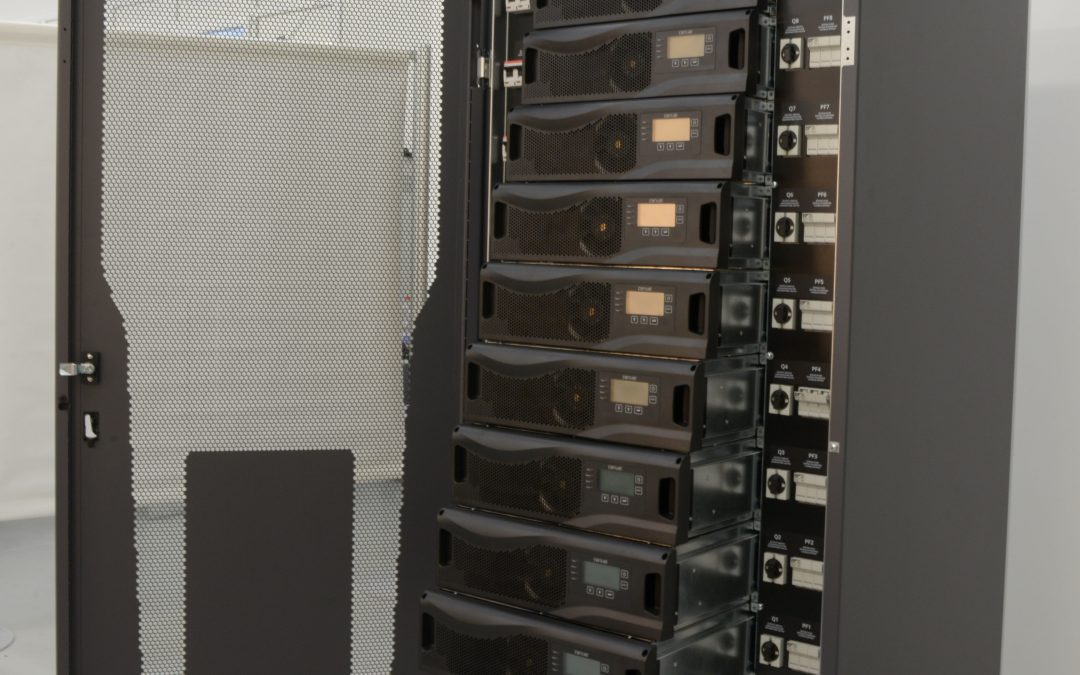The UPS industry has seen changes in topology from single standalone units to multiple redundant configurations, the establishment of the transformerless based design and the Modular concept. The driver has been to reduce energy and seek higher efficiency and at the same time increase availability by removing single points of failure. Most major manufacturers’ UPS have very high online operating efficiencies and there are now more Modular type systems in the market.
However, the term ‘modular’ can have different interpretations to different individuals. Therefore, it is important to analyse the nature of what is being described as a ‘modular system’ carefully when purchasing a UPS, to ensure the essential power of the data centre is protected at all times. Understanding the configuration and the definition of a modular system carefully, before the deal is done, is therefore critical.
At the most basic level, a single standalone UPS unit that protects a critical load is known as an N system configuration. However, a standalone UPS lacks any resilience in the event that the unit develops a fault or is offline for preventative maintenance. Paralleling a second standalone UPS unit of the same rating, provides resilience and is known as an N+1 configuration. It would be possible to parallel several standalone units together of an individual smaller rating to give the same philosophy. At the most basic level this could be described as a modular UPS system. However, there does need to be the associated electrical infrastructure –switch-gear etc – to be able to add more standalone units.
Another definition of modular is a standalone UPS designed and manufactured in a modular format. The main component parts of rectifier, inverter and static switch are modular, that is to say they can be withdrawn/inserted as a single component. If there is a problem with say the rectifier for example, it can be swapped easily. The challenge with this configuration is that if one component does fail, the whole UPS functionality goes down with it. It may be a modular system by a definition but its level of availability will not be reliable.
A better solution is what we term: a true modular UPS. This is where several individual UPS modules are contained within a frame. All the individual modules are UPS’s in their own right, all containing a rectifier, inverter and static switch and all operating online in parallel with each other. For example eight 20kW UPS modules may typically be contained within a single frame offering a resilient configuration of 140KWs N+1. Various frame and module sizes are available. If required, it takes moments (around 30 seconds) to ‘hot-swap’ a module while the rest of the modules continue to protect the critical load. At no point does the system need to be transferred to maintenance bypass and hence on raw mains.
Some other modular systems include the rectifier and inverter within their modules but the static switch is a centralised and separate component. This results in a potential single point of failure. It may only take a few moments to replace a separate static switch, but, depending on location, getting to the site to replace it may take a maintenance engineer several hours. During that time the system cannot transfer to static bypass. With a true modular system, where the static switch is included in each module, the rest of the modules in the UPS frame continue to protect the load until it can be replaced. This increases the level of availability dramatically.
When selecting a UPS system, the up-front CAPEX necessarily comes into question. This can lead organisations to purchase at lesser cost but at the risk of buying a lesser product. Therefore, it is essential to check all proposals to ensure that you are being offered a modular system that really will do the job intended: protect the critical power of your data centre with the highest level of availability. The installation of a higher CAPEX, higher quality UPS system can realise cost savings over the long-term through increased efficiency, resulting in lower running costs and a lower overall total cost of ownership (TCO), so doing a full cost analysis is usually worth calculating.
Article originally featured in ECN Magazine June 2019

